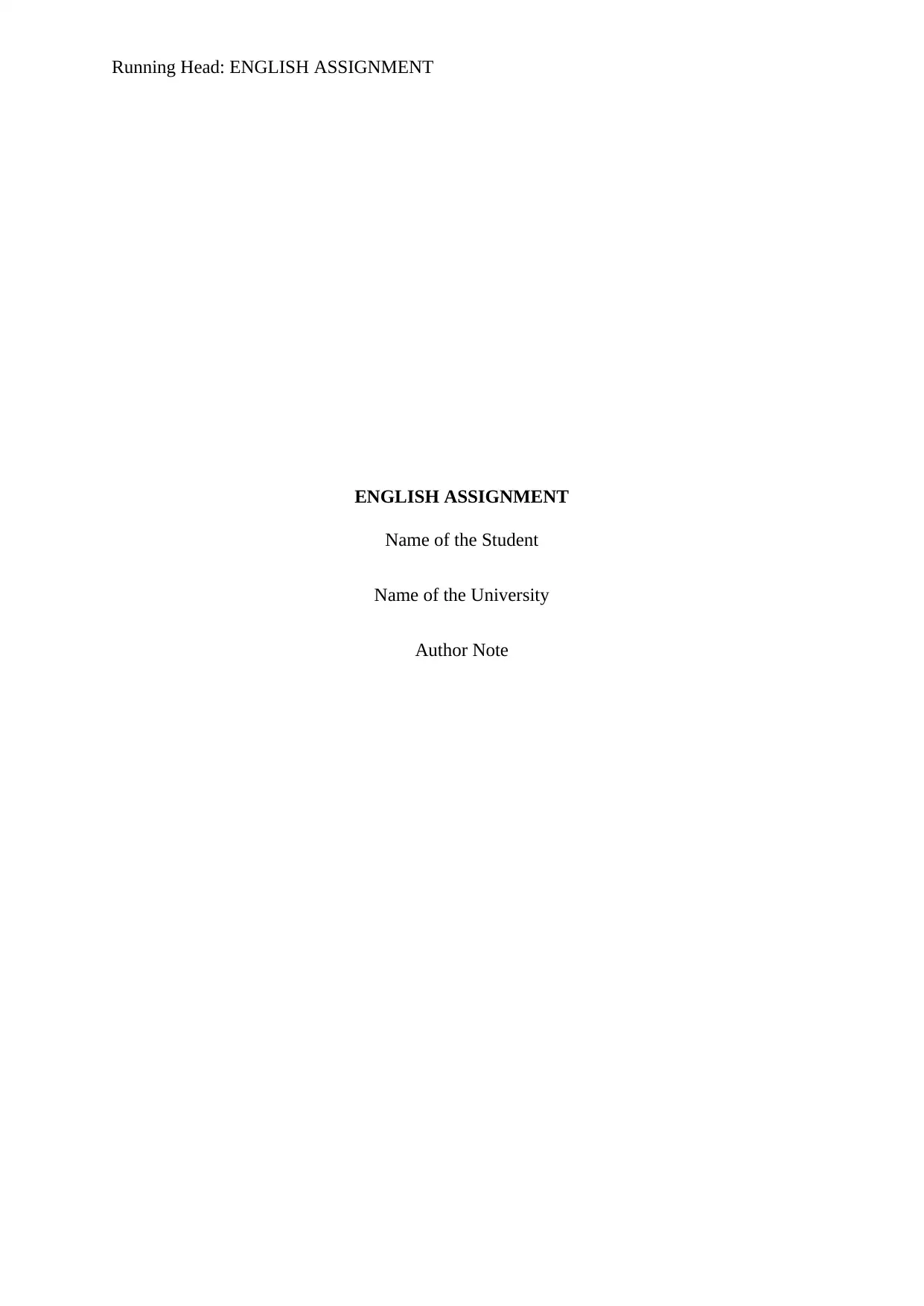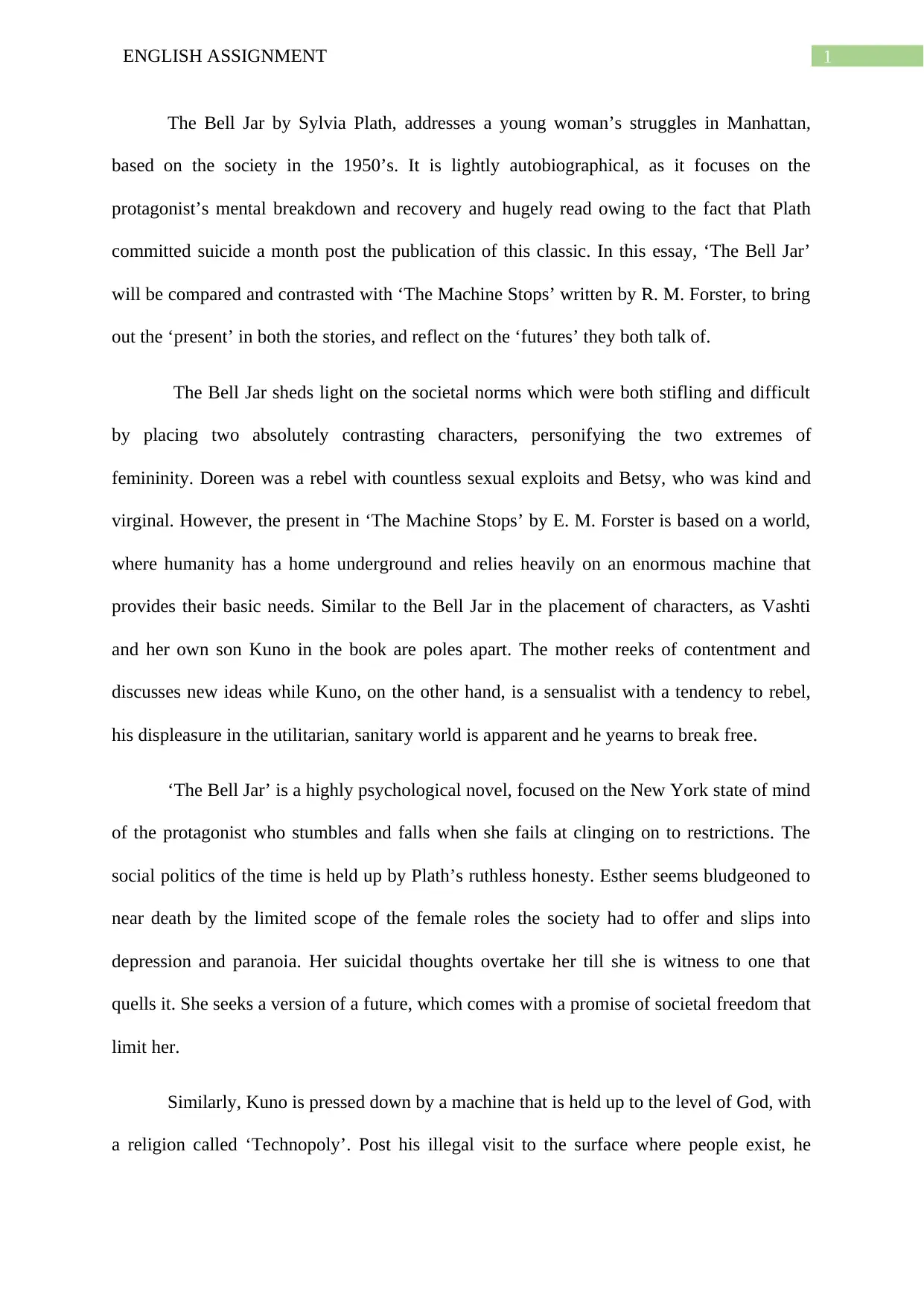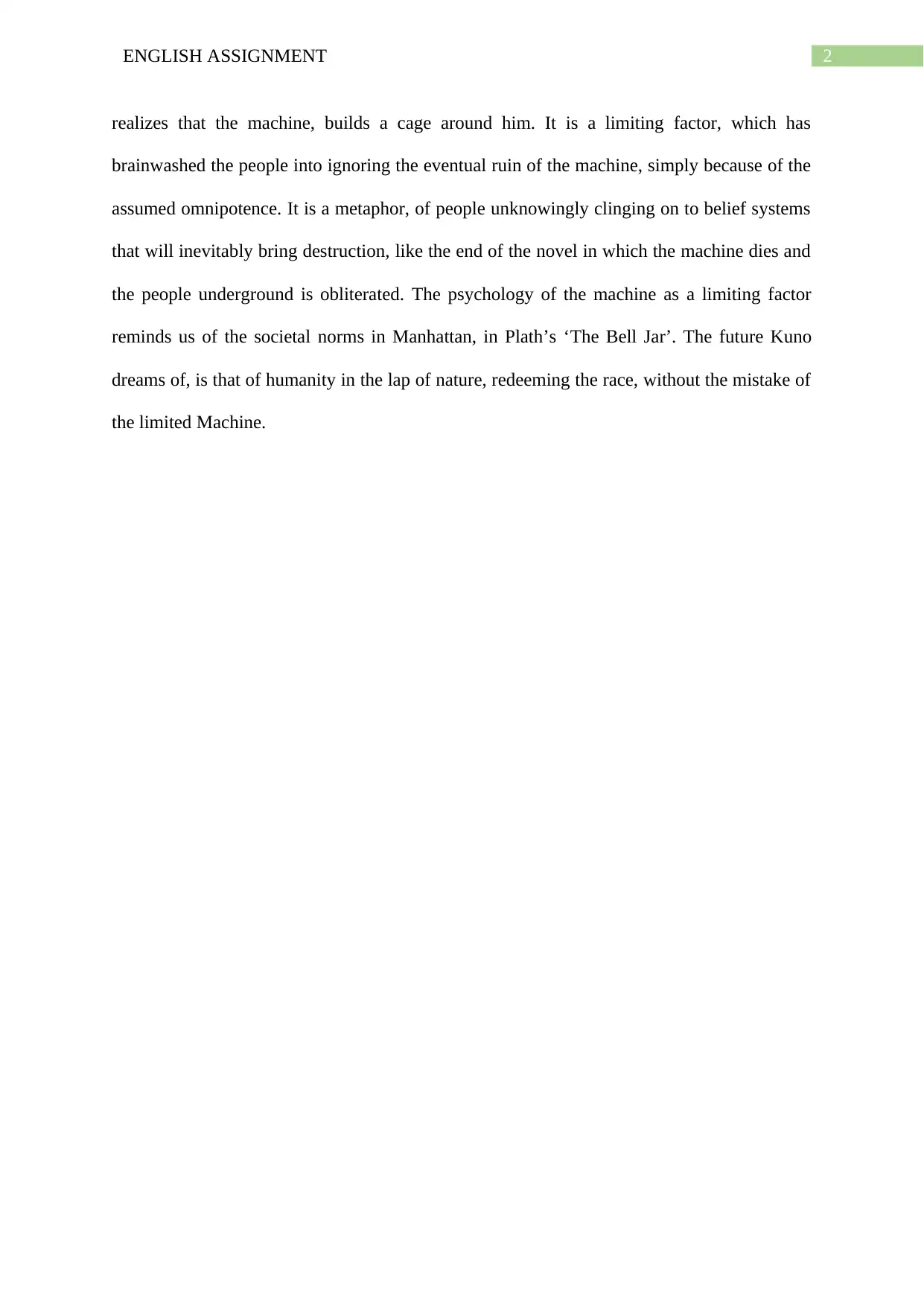Essay: Contrasting Visions of Society in Plath's & Forster's Works
VerifiedAdded on 2023/03/29
|3
|497
|381
Essay
AI Summary
This essay provides a comparative analysis of Sylvia Plath's 'The Bell Jar' and E.M. Forster's 'The Machine Stops,' focusing on their portrayals of societal norms and future visions. 'The Bell Jar' explores the stifling social expectations placed on women in 1950s Manhattan, contrasting characters like the rebellious Doreen and the conventional Betsy to highlight the limited roles available to women. Similarly, 'The Machine Stops' depicts a future where humanity is confined underground, dependent on a machine that, like societal norms, becomes a limiting and destructive force. The essay draws parallels between Esther's struggle against societal constraints and Kuno's rebellion against the machine, emphasizing the psychological impact of restrictive systems and the yearning for freedom and a more natural existence. The essay concludes by highlighting the shared theme of humanity's potential self-destruction through blind adherence to limiting beliefs and systems.
1 out of 3





![[object Object]](/_next/static/media/star-bottom.7253800d.svg)